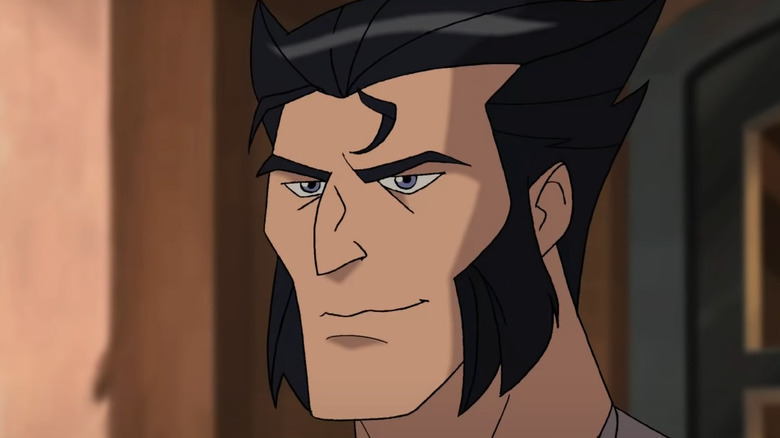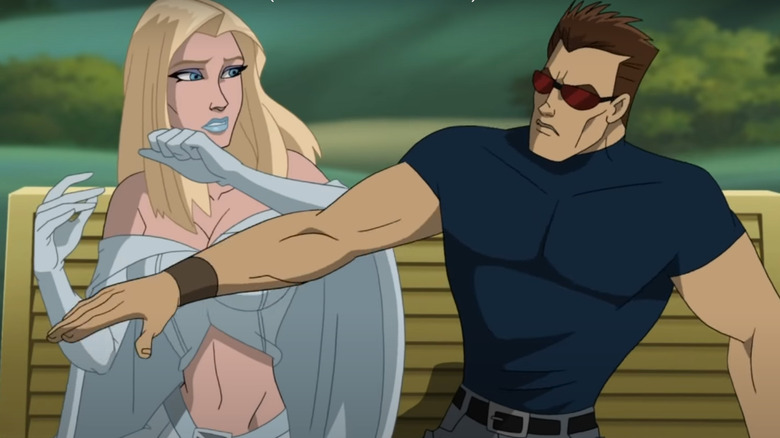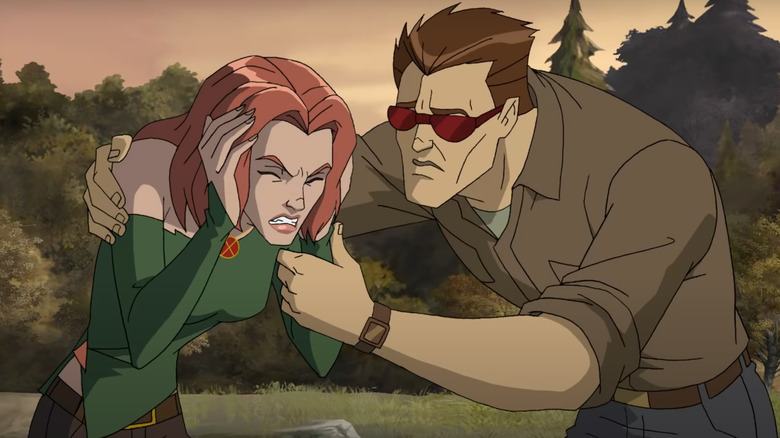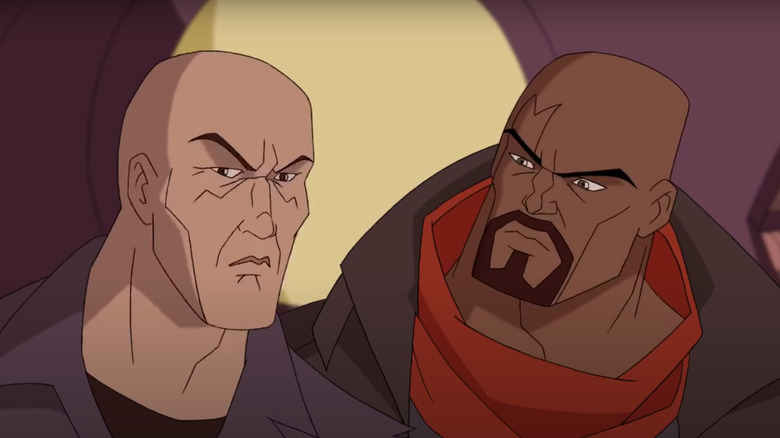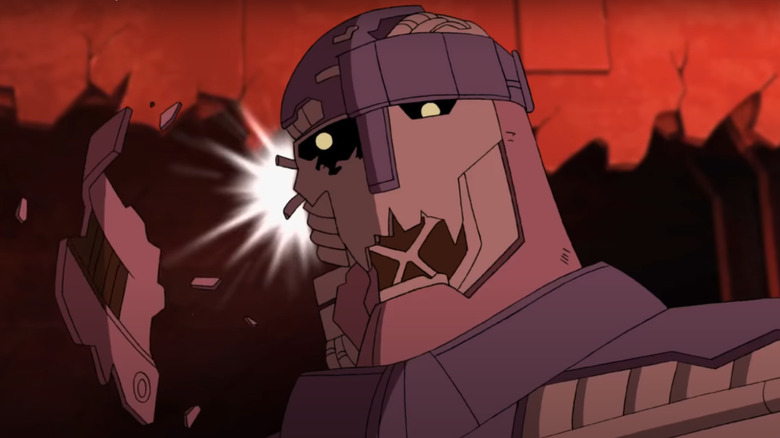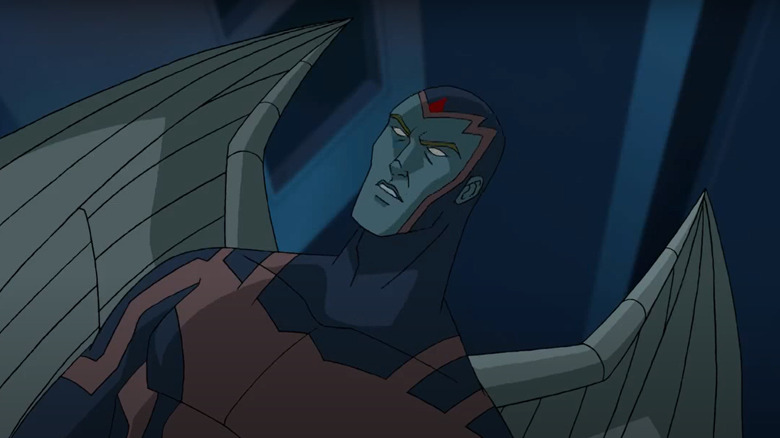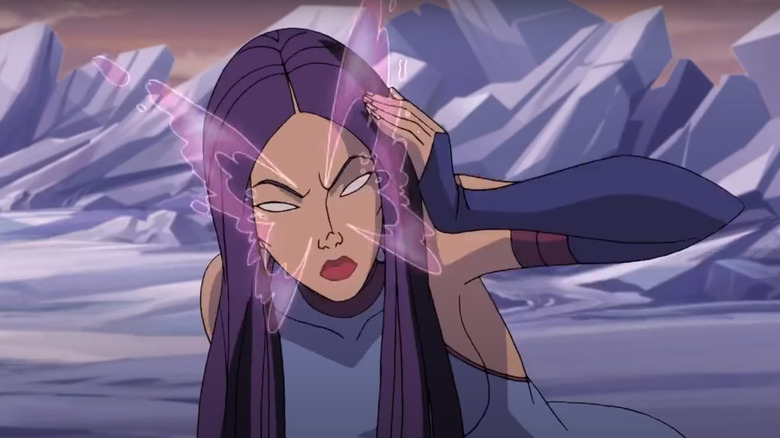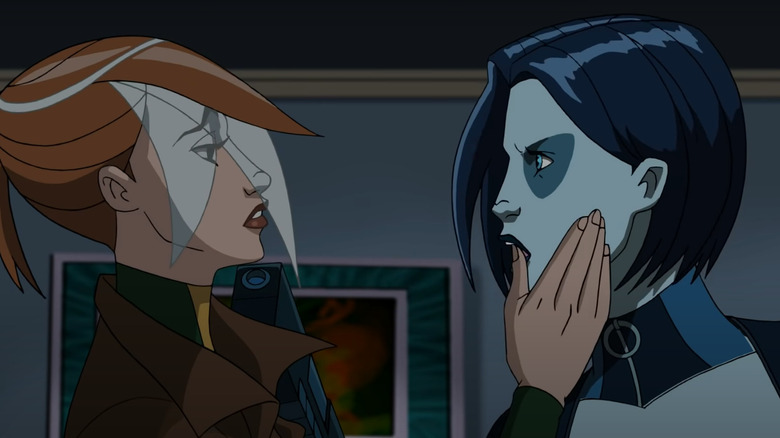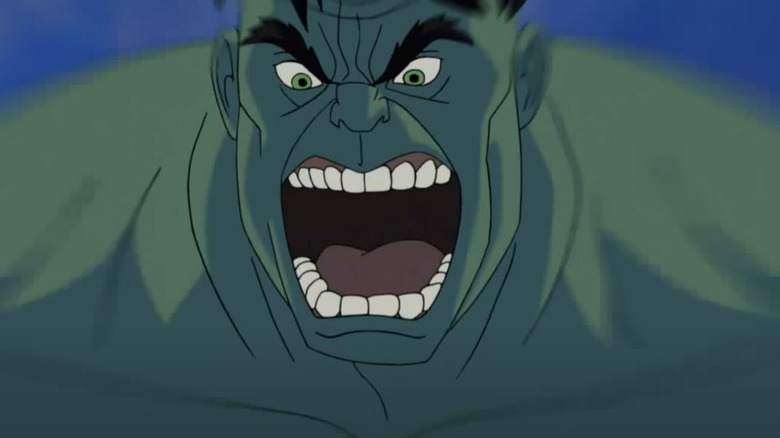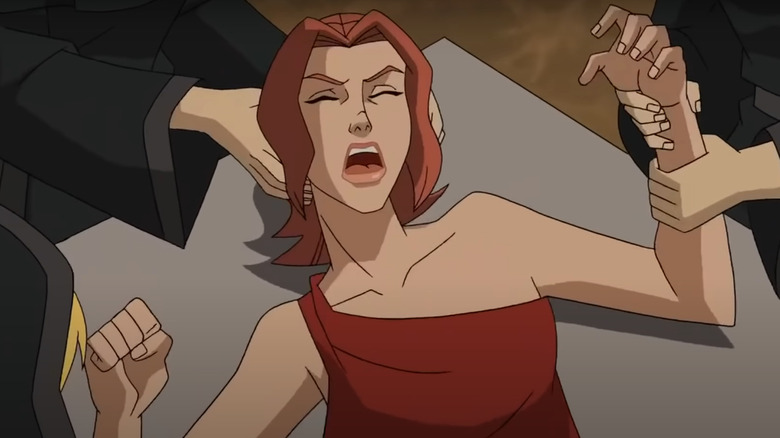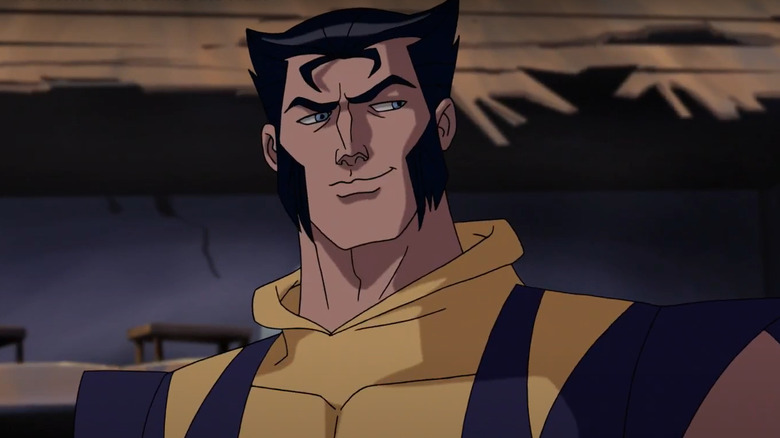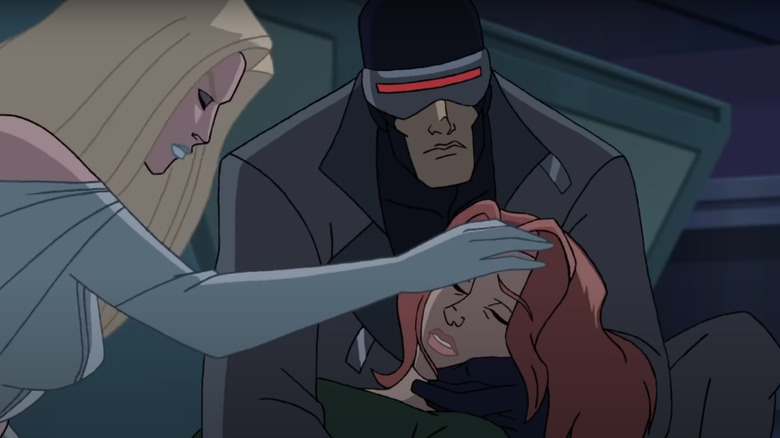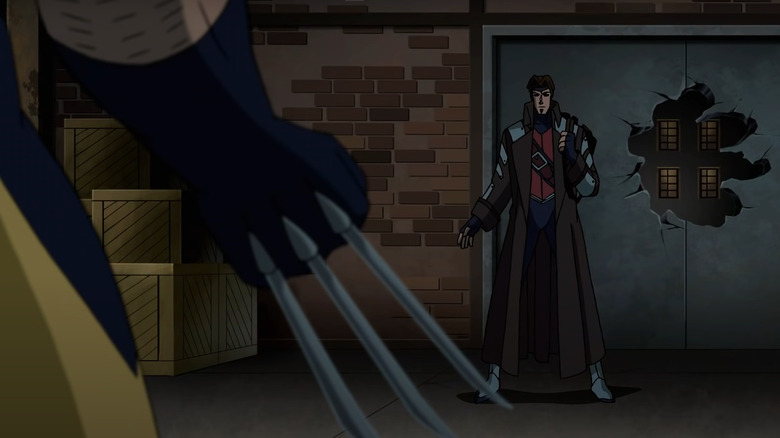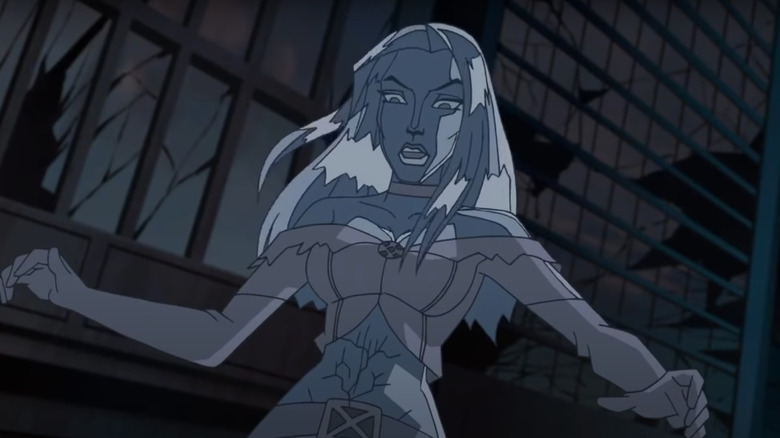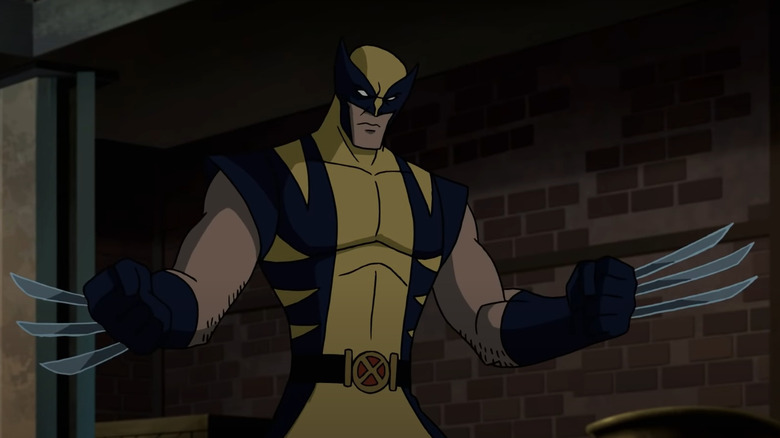The 7 Best And 7 Worst Episodes Of Wolverine And The X-Men
"Wolverine and the X-Men" only spans one season, but that's all it needs to make its mark. The show's impressive animation and high-quality writing skillfully bring beloved X-Men characters and storylines to the small screen, which has helped it build a cult following in the years following its 2009 debut. Notably, "Wolverine and the X-Men" shifts its focus from the X-Men ensemble to Wolverine, one of the team's most popular heroes. This helps the cartoon differentiate itself in a highly entertaining way.
That's not the only thing that sets "Wolverine and the X-Men" apart. This series takes place in the aftermath of a devastating psychic event that seemingly kills Charles Xavier, aka Professor X, and Jean Grey. This tragedy leads the X-Men to disband. But after a year goes by, Wolverine decides to reunite his former comrades-in-arms. The world still needs them — and so does Wolverine. What ensues is a thrilling series full of incredible high points ... but no show is perfect. Today, we're taking a look at those high highs and low lows. These are the 7 best and 7 worst episodes of "Wolverine and the X-Men."
Best: Breakdown
It's not exactly surprising that a show called "Wolverine and the X-Men" has the X-Men's traditional team leader, Cyclops, take a backseat. But fans of the first member of the X-Men aren't left hanging. Episode 20, "Breakdown," shifts the focus back onto Scott Summers, and delves into the mental struggles he's been battling throughout the show's run. Most prominently, he's still grieving his girlfriend, Jean Grey, who he still believes is dead. This episode is a quieter and more reflective one, and the characters really flourish within its stillness.
After Cyclops loses focus during a battle with Juggernaut due to a vision of Jean, Emma Frost tries to go through his memories, to see what information she can find about the explosion that apparently killed her. As she sifts, she discovers that the Phoenix Force was behind the explosion. This is just one of the episode's many treats for fans of the "X-Men" comics — we also get a flashback of the original five members of the X-Men (Cyclops, Jean Grey, Beast, Angel, and Iceman) in their original suits. "Breakdown" also nods to Emma Frost and Cyclops' long and complicated comics backstory.
Worst: Hindsight: Part 1
As the show's very first episode, "Hindsight: Part 1" is responsible for setting up the overarching plotline's central mystery. After briefly introducing several members of the X-Men and their ongoing interpersonal conflicts, the story is interrupted by a large explosion at the X-Mansion, which causes Professor X and Jean Grey to go missing. They are eventually presumed dead. The episode then jumps forward a year, and finds the X-Men disbanded. What's worse, a group called the Mutant Response Division (MRD) is rounding up mutants and placing them in captivity.
While the mysterious explosion and Wolverine's mission to reunite the remaining X-Men against the MRD provide a lot of interesting material for the writers to work with, "Hindsight: Part 1" struggles to balance its exposition-heavy storyline with its characters. The story moves at breakneck speed, never slowing down to allow big moments to resonate before quickly jumping to the next plot beat. This episode definitely could have used an extra 10 minutes to let its narrative breathe a little.
Best: Future X
Although Episode 9, "Future X," is very much its own original tale, it pulls a lot of inspiration from the popular X-Men storyline "Days of Future Past." Much like the "Days of Future Past" episodes of "X-Men: The Animated Series," "Future X" is one of the show's most intriguing and captivating arcs. Typically, "Days of Future Past" retellings involve a character from the future traveling to the present day to prevent a catastrophic event. "Future X" flips the script by sending modern-day Charles Xavier's consciousness into the future to experience an apocalyptic world and try to determine what caused it.
"Future X" also introduces several recurring characters from the future timeline, including Bishop, Domino, Marrow, and Hellion. This group of mutants breaks Professor X out of the Sentinels' custody, kicking off a multi-episode arc that involves the deadly Master Mold. The show's art style really shines in the future segments of "Future X," while the ragtag team that Xavier joins is hugely compelling and totally exciting to watch.
Worst: Rover
"Rover," Episode 21, takes place in the future storyline. Unfortunately, it lacks the excitement of the arc's other episodes. Cyclops and Wolverine manage to send a message to Xavier through his comatose body, alerting him that Jean Grey and the Phoenix Force caused the explosion that tore apart the X-Men, and might also be responsible for the apocalyptic future Xavier is experiencing. Thus, Xavier's group reprograms a Sentinel, names it Rover, and decides to use it on a kamikaze run to get into the Master Mold's detention center.
Much of the episode's conflict revolves around Marrow, who has bonded with Rover and does not want to see it destroyed in the kamikaze run. While the rest of the group feels the move is necessary, Marrow protests, leading her to eventually turn against the team and give their location to the Sentinels. Unfortunately, this character arc makes no sense and the betrayal rings hollow: There's really nothing for Marrow to gain by turning the team over to the enemy. The plan itself is also incredibly convoluted, making the future storyline feel as though it's overstayed its welcome.
Best: Guardian Angel
Out of the five original members of the X-Men, Angel is the most overlooked. Due to the character's limited range of powers, it's easy to leave him out of the spotlight. Episode 19, "Guardian Angel," rectifies this oversight. It builds up Angel as an important hero in the X-Men mythos, and introduces his transformation into the anti-heroic Archangel, one of his most interesting comics personas.
Angel works with the X-Men on and off throughout the season. But after an argument with his father, his wings become severely damaged, to the point that they're beyond use. Watching Angel battle his grief for the one thing that defined him as a mutant is deeply powerful. While the X-Men still regard him as one of their own, his feelings of inadequacy lead him down a dark path. Ultimately, he turns to the evil Mr. Sinister to help regrow his wings, but the procedure has side effects that alter Angel's personality and feed his rage and hatred. Not only is "Guardian Angel" a powerful portrait of tragedy, it also gives Angel the limelight and character depth that he deserves.
Worst: Time Bomb
Episode 8, "Time Bomb," introduces yet another cataclysmic event. This time, it comes in the form of a mutant named Nitro, who Professor X learns will self-destruct and wipe out half of the mutant population. He gets the message back to Wolverine in the present, but not before the Brotherhood of Mutants, led by Quicksilver, sets a plan in motion to use Nitro as a weapon against the X-Men and the MRD. They deploy Psylocke to keep Nitro under control, not knowing that their actions will eventually lead to the deaths of half the world's mutants.
There is nothing particularly wrong with "Time Bomb," but this otherwise forgettable filler episode is packed with missed opportunities. Psylocke, who is one of the X-Men's most interesting characters, is used as a one-off villain-of-the-week. This is especially disappointing, considering that Psylocke usually acts as a hero in the comics, something she never gets to do in the show. In addition, the decision to introduce another cataclysmic event — which gets solved in one episode — makes the show's other apocalypse-causing incidents redundant, and very nearly boring.
Best: Battle Lines
Episode 13, "Battle Lines," packs a lot of story into its half-hour runtime, but it never feels rushed or sloppy. The Brotherhood finally decides to make its move against the X-Men, and Rogue's reason for joining them earlier in the season is finally revealed. When Rogue touched Toad before joining the group, she learned that the Brotherhood was planning something big to take down the X-Men. But Toad's mind didn't contain any further details, so Rogue decided to infiltrate their ranks.
As it turns out, the Brotherhood is planning to release a powerful mutant child named Tildie, whose nightmares manifest as massive monsters. While the X-Men are unable to stop her rampaging kaiju, Rogue takes the powers of Kitty Pryde and Juggernaut and enters the creature's form, saving the girl inside. However, the chaos leads to a war between Magneto's mutants and Senator Kelly and his Sentinels. In balancing multiple terrific battles and setting up the war to come, "Battle Lines" establishes itself as one of the series' most thrilling installments.
Worst: Wolverine vs. the Hulk
Episode 7, "Wolverine vs. the Hulk" reintroduces the age-old rivalry between the two titular characters. Comic book enthusiasts will remember that Wolverine made his debut in 1974's "Incredible Hulk" #180, where he serves as an antagonist to the popular Avenger. This episode pays homage to that electric issue, and also sees Nick Fury recruit Wolverine to help stop the Hulk, who has supposedly been causing chaos in the Canadian Rockies.
Wolverine and Hulk have their fight, but like most hero-versus-hero stories, it turns out that the destruction is actually caused by a separate villain — in this case, Wendigo. Wolverine teams up with Hulk's alter-ego, Bruce Banner, in order to create a cure for Wendigo and stop his rampage. Unlike the comparable "X-Men: Evolution" episode "Operation: Rebirth," which features Captain America, Hulk is handled pretty well. However, the set-up to their fight feels like a major stretch, and there's very little meaningful story or character development. All in all, "Wolverine vs. the Hulk" feels very disposable.
Best: Foresight: Part 2
Episode 25, "Foresight: Part 2," is the second part of the three-part season (and ultimately series) finale. After betraying the X-Men in the first part, Emma Frost brings Jean Grey to her secret employers, the Inner Circle. Led by Sebastian Shaw, the Inner Circle is supposedly looking to release the Phoenix Force before it can cause any destruction. However, in a twist that takes Emma by surprise, the Inner Circle reveals they're actually looking to harness the power of the Phoenix Force in order to use it against their enemies, a list that includes all of humanity.
Not only does "Foresight: Part 2" succeed in making Emma a sympathetic and unwilling participant in the Inner Circle's schemes for ultimate domination, it expertly brings together many of the plot threads that the show has been building all season long. It finally answers once and for all why the explosion at the beginning of the show took place, while also working in the Inner Circle's wider aims. Furthermore, this ties into the apocalyptic future that Professor Xavier has been experiencing. Each of these mysteries gets a satisfying resolution — an especially impressive feat, given the show's short length.
Worst: Past Discretions
In Episode 11, "Past Discretions," Wolverine's time in the Weapon X program comes to light. Logan seeks to uncover his past, which is shrouded in mystery, thanks to his memory loss. He meets up with the daughter of a former Weapon X colleague, Maverik, but this powerful mutant takes Wolverine captive. Wolverine learns he may have been responsible for killing her father, but before he can recall his memories, he is attacked by Sabretooth, who's been sent by the Weapon X program.
While this episode could have been a great set-up for an emotional story about Wolverine coming to terms with his past mistakes, it squanders this opportunity by spending nearly half its runtime on a single fight between Wolverine and Sabretooth. While the match-up is a classic rivalry in the comics, it's become a tired trend in X-Men cartoons, having happened countless times in both "X-Men: The Animated Series" and "X-Men: Evolution." This fight brings nothing new to the table, and "Past Discretions" ultimately feels like a filler episode, indistinguishable from the many similar installments that came before it.
Best: Shades of Grey
Episode 23, "Shades of Grey," finally reintroduces Jean Grey, who was apparently killed in Episode 1. She reappears in a hospital, afflicted with amnesia. After becoming panicked, the powerful psychic releases telepathic energy that Emma Frost is able to sense, leading her and Cyclops to find Jean at last. However, they are captured by their one-time ally, Archangel, who brings Cyclops and Jean to Mr. Sinister. The vicious villain plans to use their DNA to create genetically enhanced super-mutants. The X-Men arrive in time to save them, but Emma double-crosses them and whisks Jean off to her other group, the Inner Circle.
As a founding member of the X-Men and one of its most important characters, Jean Grey's absence is felt quite heavily throughout the show's run — both by audiences and the X-Men themselves. "Shades of Grey" does a great job of bringing the character back into the fold, and helps to set up the final act of the show's one and only season. It also delves into the mixed feelings Emma has about finding Jean. She knows how much Jean means to Cyclops, which means finding her is a good thing ... but it also ruins Emma's chances of starting her own relationship with him.
Worst: Thieves' Gambit
As many fans likely guess by the title, Episode 5, "Thieves' Gambit," introduces popular mutant Gambit into the world of "Wolverine and the X-Men." But while the hero is a staple member of the team in "X-Men: The Animated Series" and has an interesting arc in the latter seasons of "X-Men: Evolution," "Wolverine and the X-Men" completely wastes the character by pitting him against Wolverine as a hired goon for Senator Kelly.
After saving Magma, a young mutant with difficulty controlling her powers, from the MRD, Wolverine has Forge build a collar for her that inhibits her abilities. Unfortunately, Senator Kelly becomes aware of the collar and has Dr. Zane hire Gambit to retrieve it. The rest of the episode involves a battle between Wolverine and Gambit, which ends when Wolverine offers Gambit double the money to let him keep the collar. "Thieves' Gambit" strips away Gambit's unique and complicated relationship with the X-Men and his reluctant heroics, turning him into a rogue who only cares about money. This leaves a sour taste in the mouths of Gambit's biggest fans and bores everyone else in the audience.
Best: Foresight: Part 3
Episode 26, "Foresight: Part 3," serves as the Season 1 finale of "Wolverine and the X-Men," and, due to its unfortunate cancelation, the series finale as well. While the show deserved another season, especially since it teases an "Age of Apocalypse"-themed storyline in the last few episodes, "Foresight: Part 3" still succeeds surprisingly well as the show's ending. It wraps up many of the show's main plotlines, including that of the Inner Circle and the Phoenix Force.
This episode also cements Emma Frost as the show's most compelling character. While Emma Frost has been one of the most important figures in X-Men-centric comics for quite some time, her portrayal in films and animated shows has always been lacking. But much of "Foresight: Part 3" revolves around her choice to turn against the Inner Circle and rejoin the X-Men. Emma's decision to sacrifice her own life to save Jean Grey's is especially shocking, and gives the finale a bittersweet final beat.
Worst: Code of Conduct
Surprisingly, many of the lowest-rated episodes of "Wolverine and the X-Men" are the ones that deal with Wolverine's past. He may be compelling as the reluctant leader of the X-Men, but something about the show's handling of his backstory just doesn't seem to resonate with audiences. Though "Code of Conduct" may not be rated all that poorly, it does fall below every other episode in IMDb's rankings. Perhaps this is due to the fact that his overcomplicated past in Japan is stuffed into a single episode. There's definitely enough going on here to merit a multi-episode arc.
"Code of Conduct" starts with the Yakuza, who invade the X-Mansion and capture several members of the X-Men. Their leader, the Silver Samurai, wants to regain his honor by dueling Wolverine, and will only return the captured mutants if Wolverine agrees to fight him. Having no other choice, Wolverine assents. But things are complicated by the appearance of his old love interest, Mariko, who is now married to the Silver Samurai. This tale has promise, but the rushed nature of the episode makes it difficult to really get a handle on Wolverine's relationship with Mariko and the Silver Samurai. A better set-up might have let their duel feel more satisfying — but sadly, such a set-up is nowhere to be found.
